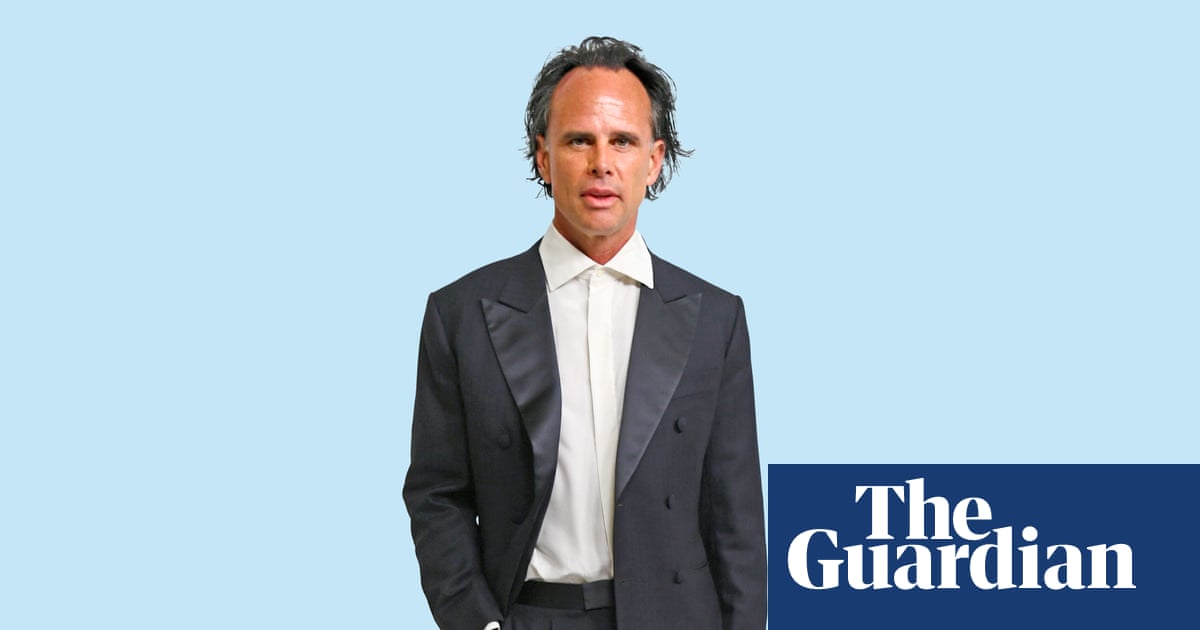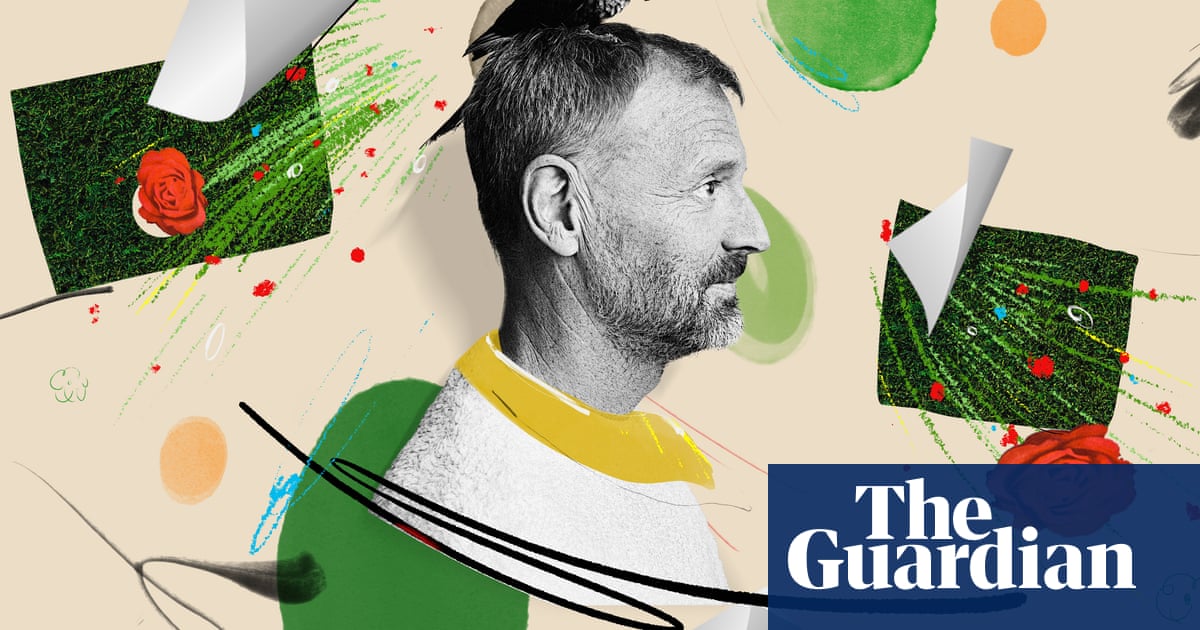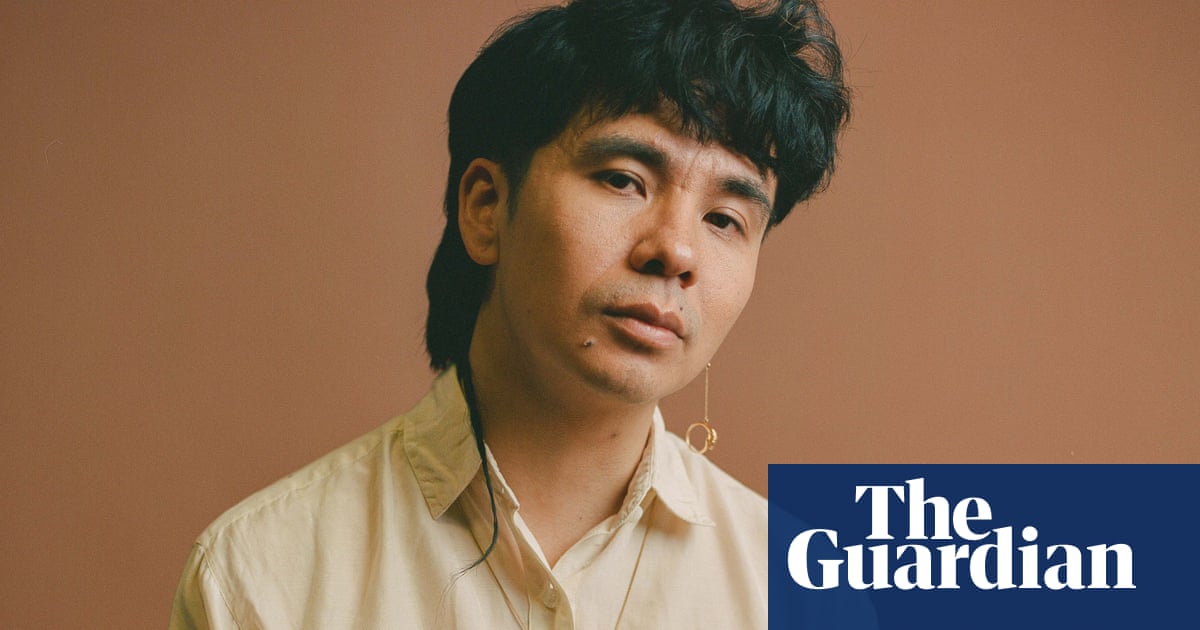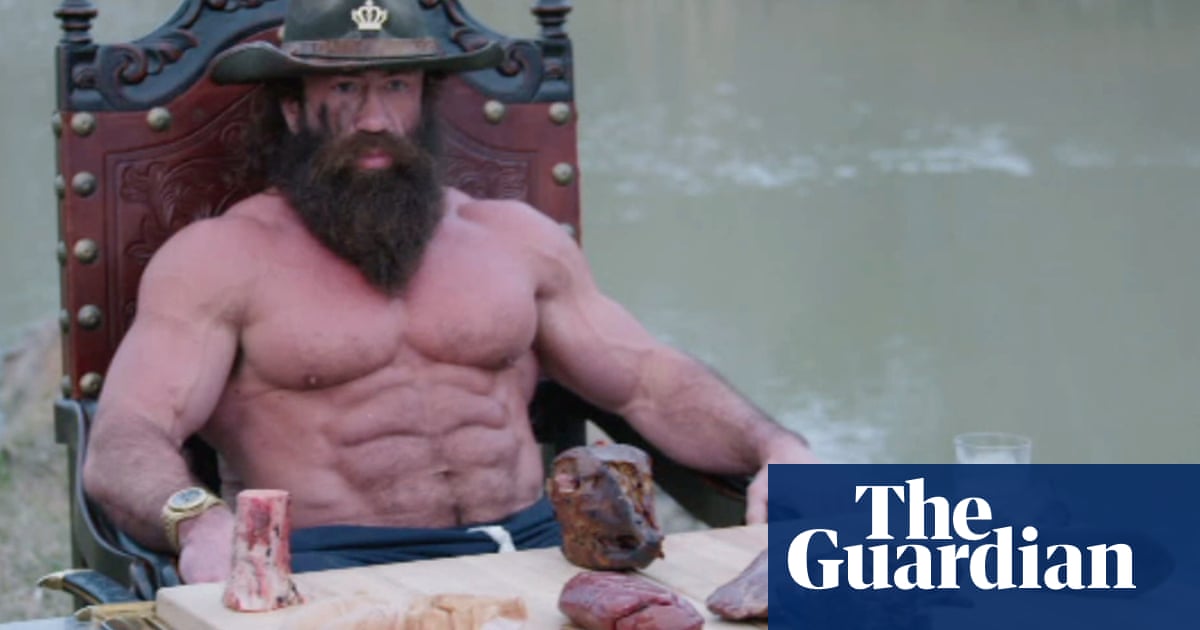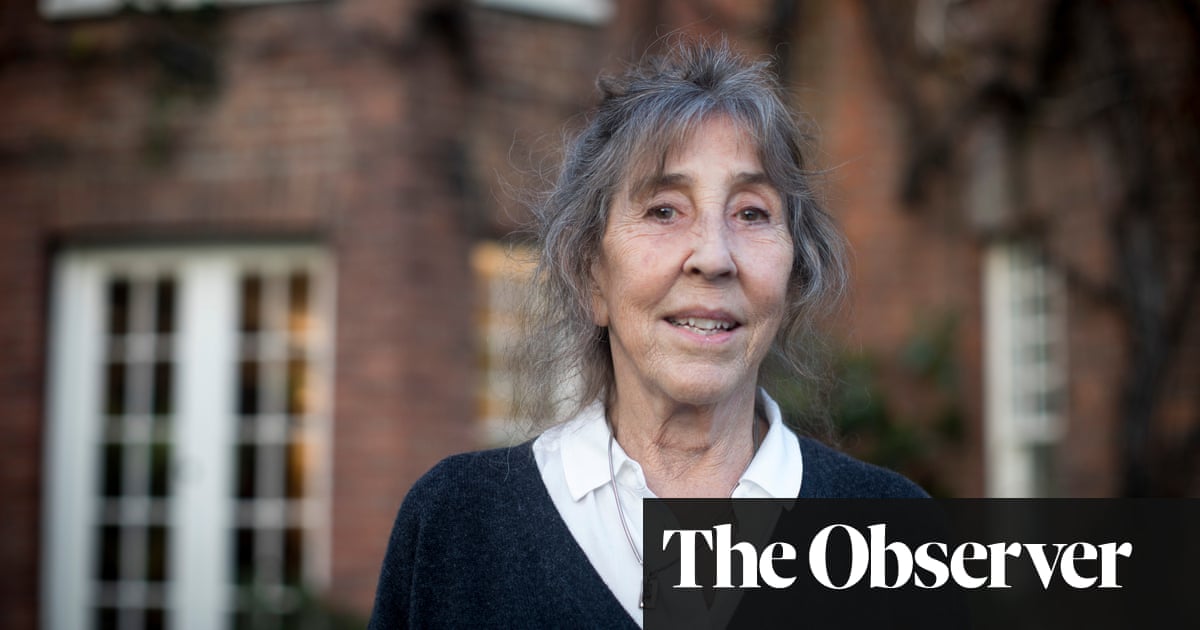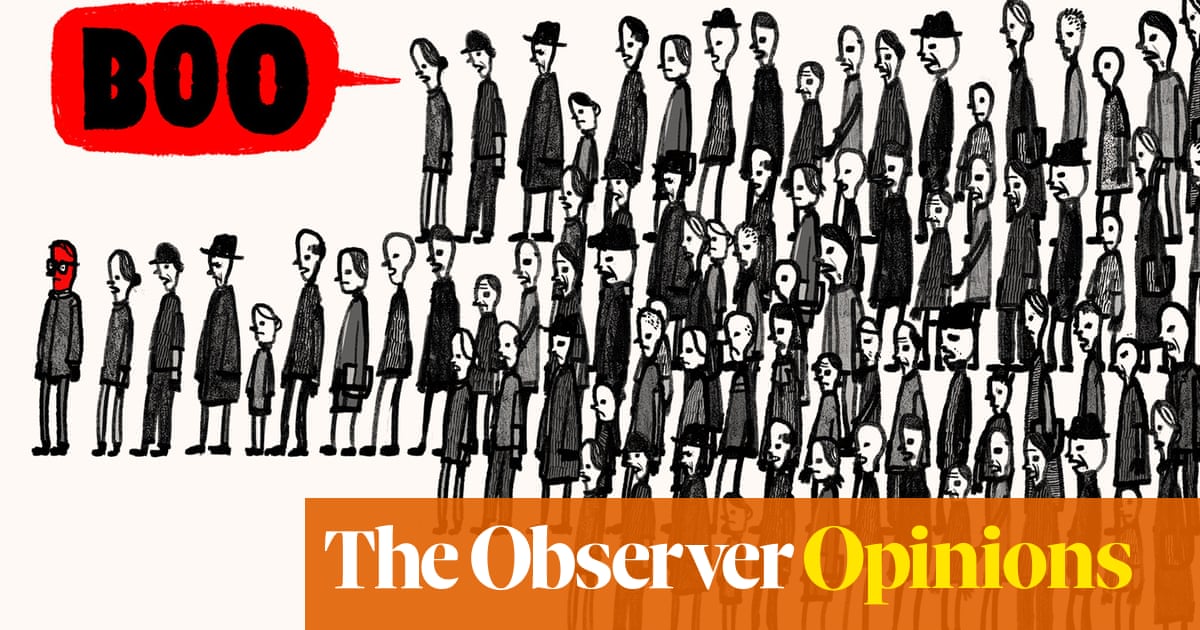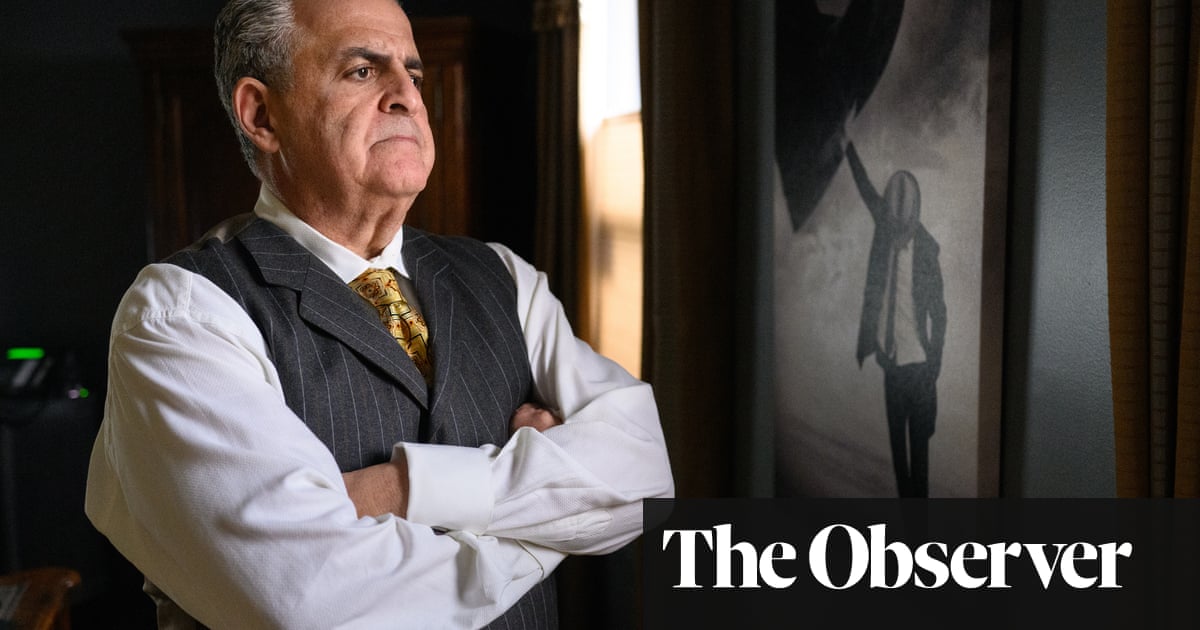In October 1980, 19 year-old Leigh Bowery arrived in London from the small Australian town of Sunshine in suburban Melbourne. He brought with him a single suitcase and a portable sewing machine. A few months later, he spent his first Christmas away from home in a rented bedsit feeling depressed and lonely. On 31 December, he attempted to raise his spirits by writing down his new year resolutions:
1. Get weight down to 12 stone.
2. Learn as much as possible.
3. Become established in the world of art, fashion or literature.
4. Wear makeup every day.
He failed miserably to keep the first resolution despite completing several crash diets. “As soon as they were over, he would stuff his face with about 10 burgers, which undid his good work.” his close friend Sue Tilley recalls in her fly-on-the-wall, gossip-drenched book, Leigh Bowery: The Life and Times of an Icon.
He set about the second fitfully and the fourth with often extravagant application, but it was the third that now seems most indicative of his bigger ambition, which was to become famous at all costs. He pursued it in spectacular fashion throughout the 1980s and into the early 90s – posing, performing, modelling, working as an art director on promo videos for bands including Massive Attack. During that time, he also collaborated with the dancer Michael Clark, formed a transgressive pop group, Minty, and became a nude model for the portrait painter Lucian Freud.
Bowery’s greatest achievement, however, was to transform himself into a living, breathing work of art in a sustained process of continuous sartorial self-reinvention that lasted right up until his death in 1994 at the age of 33. Throughout, he created a succession of elaborate looks that included decorating his cherubic face with polka dots, dripping brightly coloured paint over his gleaming bald head, encasing his body in thick foam costumes that exaggerated his bigness, squeezing into tightly bound basques and covering his entire body, including his face, with dazzlingly patterned material. One of his creative collaborators, corset maker Mr Pearl, described the latter outfit, which was topped with a military style helmet, as “Shelley Winters if she belonged to the Gestapo”.

The fame that Bowery sought in his lifetime was fleeting and cultish, not least because the extravagant alter ego he created was too strange and threatening to ever cross over in the manner of other contemporary gender-mischievous 80s celebrities such as Boy George or Marilyn. On the rare occasions that Bowery did manage to gatecrash the mainstream, usually on TV chatshows, his wilfully freakish presence shocked and appalled studio audiences in equal measure. Instead, the nightclub became his catwalk and gallery. “Before he called himself an artist, he already was one,” says his friend, the film-maker John Maybury. “He had an artist’s obsessive drive to create and constantly reinvent himself.” Another friend, Tony Marnoch, now more famously known on the global club scene as DJ Fat Tony, says: “He created a masterpiece – himself. It allowed him to cover up all his cracks and bruises.”
Today, 30 years after his death, Bowery remains on the margins, but his influence is palpable everywhere, from the high camp melodrama of Ru Paul’s Drag Race to the extravagant costumes worn by modern pop stars including Lady Gaga. Next month, though, Bowery himself will make headlines once again in a way that even he may have found surprising. At Tate Modern, an exhibition entitled Leigh Bowery! will celebrate his art, life and legacy in a series of themed rooms – the home, the club, the stage, the gallery – that will explore his myriad self-styled roles and singular presence.
It is a belated recognition of his enduring influence on the increasingly porous worlds of art, pop and fashion, but also, as curator, Fiontán Moran, says, a moment to reappraise him as a serious artist. “Just having Leigh Bowery’s work in Tate Modern rather than a fashion or design museum is a way of reimagining him. And, while fashion design is a major part of his legacy, the exhibition will look at his life as one never-ending performance that explored the body and all the things that can be done with it. That groundbreaking idea is central to everything he did, and everything he made.”
In its size and elaborate adornment, Bowery’s body mirrored his ambition and his personality, loudly and unapologetically signalling his otherness, whether on the dancefloors of London’s gay clubs or on his regular, head-turning trips to his local supermarket. To encounter him unexpectedly, as I once did in the semi-deserted streets of early hours Soho, emerging out of a side alley on Brewer Street, was to be momentarily taken aback. He looked arrestingly strange, his size and manchild features, alongside his body-hugging costume, lending him an unsettling aspect that seemed to have more in common with the darkly unconscious imaginings of surrealism than the high-camp flamboyance of drag.
Brix Smith was a guitarist in indie band the Fall when they collaborated with Bowery and Clark in the latter’s 1988 show, I Am Curious, Orange. She remembers being simultaneously intrigued, exhilarated and unsettled by Bowery’s brilliance and his edginess, comparing him to “the scary clown figure that everyone encounters as a child”. Fat Tony remembers witnessing him “becoming this ever more extravagant character who lived out his fantasies in a way that could not help being confrontational. He was brave. He had no fear.”

Bowery’s constant urge to shock and confront had its beginnings in his childhood in Sunshine, where he was raised in a strict, conservative family in a suburban religious community. “When you grow up in that kind of environment, you have two choices: conform or react,” says his younger sister, Bronwyn, who now lives in Cardiff. “Leigh chose to react. Even as a boy, he was instinctively driven by a desire to challenge and shock the status quo, both at home, and in the wider community.”
When he was 12, Bowery’s body played a strange trick on him. “He had a dramatic growth spurt and shot up to the height [6ft 3ins] that he remained for the rest of his life,” recalls Bronwyn. “He suddenly found himself able to tower over my father and all the teachers at school. This was around the same time that he decided he wanted to have a voice. His physicality definitely became a way of asserting that voice.”
In Sunshine, having an assertive voice was not encouraged unless it conformed to strict rules of good behaviour and decorum. Bronwyn recalls witnessing several familial rows that were precipitated by her brother’s willingness to challenge their father’s disciplinarian outlook by “looming over him as they argued and arguing with him in such a rational and articulate way that it further provoked my dad’s rage”.
Bowery’s acts of defiance became more confrontational as he discovered his sexuality in his early teens, not so much coming out as gay as realising and accepting it, seemingly without any attendant anxiety. “As a young gay man, he knew he was never going to be accepted,” says Bronwyn, “but he found the courage to challenge that in his own inimitable way.” At one point, he knitted himself a green woollen suit that, Bronwyn remembers, “was so itchy it was almost unbearable to wear”. But wear it he did, forcing his feet into a pair of tiny pointy shoes to complete a look that seems, with hindsight, a signal of what was to come. “It did not surprise me at all when he went to London and began transforming himself so dramatically,” she tells me.
Intriguingly, too, Bowery seems to have discovered the power of public embarrassment at around the same time, using it initially as another weapon in his war against the constrictive conformity of family and community. He once lifted his mother up and, despite her protestations, placed her on the grocery conveyor belt at their local supermarket. Another time, he returned home from a friend’s house with his hair dyed bright orange. “That caused a total meltdown,” says Bronwyn. “My mother found out just before he was supposed to play the piano for all the local ladies at a Mother’s Day church service. She absolutely freaked out and must have washed his hair about 10 times to try to get rid of the colour.”
Years later, in London, as his notoriety grew, Bowery used embarrassment as a weapon, both in his performances and, more casually, in his everyday life. In her wonderfully matter-of-fact way, Tilley recalls a visit to Birmingham with him in the 80s for an appearance on the daytime TV show Pebble Mill at One. “We had time to kill so we drank a half bottle of vodka and went to see the pre-Raphaelites at the local gallery. Leigh immediately told the security guards that I wanted to give them blowjobs.” In her book she describes how he also loudly propositioned a passing nun on her behalf. “I was hiding behind a pillar with embarrassment, but also laughing,” she says, shaking her head as if still thrilled and appalled.

Later when they went to a local cinema, the mayhem continued. “He became bored so he took all his clothes off and paraded naked up and down the aisle for the entertainment of the three other people in there. They just sat there quietly, ignoring him in that very English way. Afterwards, she adds cheerily, “he bought me a Cornetto. Then another one, and another one.” She pauses for a moment’s reflection. “Leigh had to be busy doing something all the time, either making stuff or making mischief. It’s almost as if he had too much personality for his body. That’s why he kept his friends separate and flitted between them. There was too much of him for one person to deal with.”
In the early 1980s, as the edgy invention of punk and post-punk gave way to the posturing dandyism of the New Romantic movement, Bowery drew on both, using his body and the outrageous clothes he created as a way to shock and provoke. “We had all learned from punk,” says Maybury. “To a degree, the same sensibility was at play – have fun, annoy people, and maybe get your face on the front of a tabloid newspaper. Attention was Leigh’s currency and he used it to open doors and push boundaries.”
As Maybury also points out, the London club scene of the time was relatively small by today’s standards. “Everything happened in and around Soho back then and it was all word-of-mouth – no mobile phones, no social media. Everyone involved was connected on some kind of psychic telegraph and that somehow made it even more exclusive and exciting.”
Initially Bowery was a big presence in a small scene. That changed dramatically in 1985 when he founded Taboo, the wildly dissolute nightclub he created in his own image. At first a place for his equally outre friends to dress up, hang out, dance and pose, it slowly gained a kind of hip notoriety as its reputation for excess spread. Soon, it became a mecca for the city’s most outrageous nocturnal revellers: drag queens, transvestites, gay and straight punters who dressed to outrage rather than impress and curious celebrities such as Bryan Ferry, George Michael and Mick Jagger. According to Tilley, straight people were reportedly turned away at the door by Bowery’s flamboyant accomplice, Mark Vaultier, who, “if he didn’t like the look of someone would hold a mirror up to their face and say, ‘Would you let yourself in?’”

In the 80s street style bible i-D, journalist Alix Sharkey wrote of its curious allure: “These days Thursday nights in the West End usually means Taboo – London’s sleaziest, campest, bitchiest club of the moment which is stuffed with designers, stylists, models, students, dregs and the hopefully hip, lurching through the lasers and snarfing up amyl.” The defining atmosphere, he concluded, was characterised by “a narcissistic air of self-absorption”.
Soon, though, things turned darker. The first ecstasy pills had just appeared on the UK club scene alongside other more established dancefloor stimulants amphetamine and amyl nitrate. At some point, as if to emphasis the self-absorbed nature of the scene, heroin, arguably the least clubbable drug imaginable, also became fashionable. In August 1986, Bowery’s best friend, former flatmate and creative collaborator, the waif-like Trojan (AKA Gary Barnes), became the first casualty, dying from an overdose. Bowery had fallen hopelessly for Trojan on first encountering him, but, despite his persistent overtures, his feelings were never reciprocated. Instead, Trojan had begun a relationship with Maybury. Devastated by his death, Maybury also overdosed on heroin a week later, but survived after being taken to hospital. He spent several weeks paralysed and emotionally at sea, before beginning a long recovery.
“My friendship with Leigh was close initially,” Maybury tells me, “but it dissolved when I became Trojan’s boyfriend even though, to a degree, they remained what I called a ‘reluctant double act’ on the scene.”
While recovering in hospital, Maybury saw another side of Bowery. “To my surprise, he visited me nearly every day and was incredibly supportive, caring and loving. Suddenly, there was a real human being there who really did care about other people.”
In December of that year, Vaultier, another Taboo regular, was also found dead, in this case from an overdose of methadone, just a few days after being arrested on a charge of drug possession alongside Boy George, who went into hiding to escape the ensuing tabloid frenzy. It seemed like the darkness had descended on the pretty young things of 80s London.

“The darkness was heroin,” says Maybury, “I was vehemently anti-smack in the beginning, but Trojan made it seem glamorous and I fell into it. At that age, you think you’re going to live for ever, but I was so incredibly lucky to survive.”
With hindsight, Maybury sees heroin as a symptom of those darkening times. “The Aids pandemic was beginning – the forgotten pandemic – and with it this sense of dread and the fear. We were entering a period of what seemed like constant funerals. I think there was a sense among some on the scene of, ‘Fuck it, let’s party!’ A kind of crazy defiance in the face of the coming storm.”
Throughout the 80s, Bowery had stayed clear of hard drugs, but, as Tilley’s book attests, had a sexually promiscuous lifestyle that tended towards casual encounters with often straight men that he picked up at his regular “cottaging” haunts around London. “Everyone was sleeping with their friends back then,” says Tilley. “We were right slappers, but oddly Leigh didn’t get off with people when he went clubbing. Instead, he had to go out to lavatories and find people to have sex with. Then, he’d come back and tell us all about it. How he managed to get anything done, I don’t know.”
At Taboo, Bowery also encountered the woman who was to become his most unlikely – and arguably most important – collaborator and soulmate. Her name was Nicola Bateman (now Nicola Rainbird), a quiet but flamboyantly dressed young woman who studied textiles at Middlesex Polytechnic and who, it turned out, had an aberrant creative urge that matched his own.
“We got on very well from the very start,” she tells me over the phone from the seaside town of Eastbourne, where she now lives with her three children. “Because we had a deep art connection. For us, making pure art was the most important thing of all.”
Their subsequent performances, though, stretched the definitions of the words pure and art in their shared determination to shock and disturb – some involved vomit and urine. In another, which features in Charles Atlas’s film The Legend of Leigh Bowery, he falls on his back on stage to “give birth” to Rainbird, who emerges from his Velcro-ed nether regions, covered in slimy red liquid and trailing a string of sausages. She looks dazed and disoriented, which adds to the unsettling absurdism.

“I had to be a baby, attached upside down to his body underneath this quite complicated garment,” she says. “At one point, I did have a panic attack, laughing uncontrollably then crying uncontrollably from being tipped up and down too much and the lack of oxygen to my brain. It did make me wary, but I concentrated on my breathing from there on.”
Initially, Rainbird had simply collaborated on his costumes, sewing sequins long into the night. Their closeness bemused his inner circle. “People on the scene didn’t like our relationship,” she says. “I wasn’t a bloke and that caused a bit of jealousy, but luckily I was naive so a lot of the insults went over my head. I also think a lot of them mistook my niceness for weakness.”
Their relationship, though, had a power dynamic that seems, to say the least, imbalanced. “He would sometimes pick on me at first in front of his friends for a laugh,” she recalls. “It didn’t make me look very good, but he had such a way with words that it was always amusing somehow. We’d have arguments afterwards and he’d be contrite, but then he’d do it again.”
In her book, Tilley writes: “A lot of the time, Leigh was really horrible to Nicola,” describing how, following a heated row, he would sometimes “pick her up and lock her on the balcony of his flat for a couple of hours”. Her anger would invariably turn to laughter, at which point he would relent and open the door. “I really think he wanted to test me,” says Rainbird, “to see how far I was prepared to go with him. Later it all slowed down.” Today, she remembers their time together fondly and without regrets: “I realise now how lucky I was to be with him and be so creative in that scene.”
On Friday 13 May 1994, the pair were married, further surprising everyone in Bowery’s several circles of friends. He described it to her as “a little private art performance between ourselves”. It lasted seven months until his death from Aids-related illnesses on New Year’s Eve. “I cried for a day and a night when he told me he was HIV-positive,” says Rainbird, “but I was glad for him in the end that his death was quick. He had tuberculosis and pneumonia.” She pauses. “I think he was annoyed more than anything, because he still had so much he wanted to do. Death was an inconvenience.”
Bowery had managed to keep his illness secret from everyone but Tilley and Rainbird. His sister, Bronwyn, had received a late-night call from him a few months before a planned trip to London, in which he told her he was not feeling well. “After the call,” she says, “I ran to the toilet and vomited. I knew it was bad news.”
Both she and her father had travelled to Britain to visit him, but were away seeing relatives when Bowery died. They returned for a gathering of his friends in his flat and went to Taboo afterwards, but no one’s heart was really in it. Bowery was buried weeks later, next to his mother’s grave, beside the family’s holiday house near Melbourne. “I read some poems and we drank champagne,” says Bronwyn. “Then, when it was time to drop the coffin into the ground, the grave wasn’t big enough so my cousins had to go and find some shovels.” Even in death, then, Bowery was larger than life.

At Tate Modern, Bowery will be remembered for many things, including the groundbreaking pop-cultural event when he “danced” with Clark’s ensemble at Sadler’s Wells to live music by the Fall, and the moment he entered the art world through his installation at the Anthony d’Offay gallery in 1988, posing daily in a different costume on a chaise longue behind a one-way mirror. More resonant still are the extraordinary series of portraits of him by Lucian Freud in the early 1990s which have enshrined his body, for once utterly unadorned and in almost meditative repose, for posterity. In their oil-smeared detail, they capture Bowery’s fleshy corpulence and looming presence, but with a grace and honesty that seems more uncharacteristically poignant as the years pass.
Tilley noted that the first sitting at Freud’s studio radically changed Bowery’s life, lending him credibility in the art world and allowing him “to learn an enormous amount”. The artist’s daughter, fashion designer Bella Freud, also witnessed their intriguing interaction on her visits to the studio. “I sensed he was deeply absorbing what my father said in their conversations because he was often so quiet and listening intently. But he also brought stuff to the table that my dad found fascinating. They were both outsiders – and artists – in their different ways and, as such, complementary to each other.”
Freud remembers her father’s voice breaking on the phone after he learned of Bowery’s death. “There were tears, which was very unusual for my father, who tended to hold back his emotions. He really loved Leigh and was devastated when he died.”
Whatever new – and possibly more restrained – creative paths Bowery may have pursued had he lived longer is anyone’s guess. What remains are the remnants of his singular life. His legend, reimagined and repositioned, will hover over the Tate Modern exhibition, not least because one crucial element will be missing: Bowery himself in all his attention-seeking, jaw-dropping, over-the-top otherness. “I miss him,” says Maybury, speaking for many of his contemporaries. “Every time he showed up, he was like a kinetic beacon, vibrating.”
Leigh Bowery! is at Tate Modern from 27 February to 31 August. Leigh Bowery: The Life and Times of an Icon by Sue Tilley is published by Thames & Hudson

 3 months ago
42
3 months ago
42
